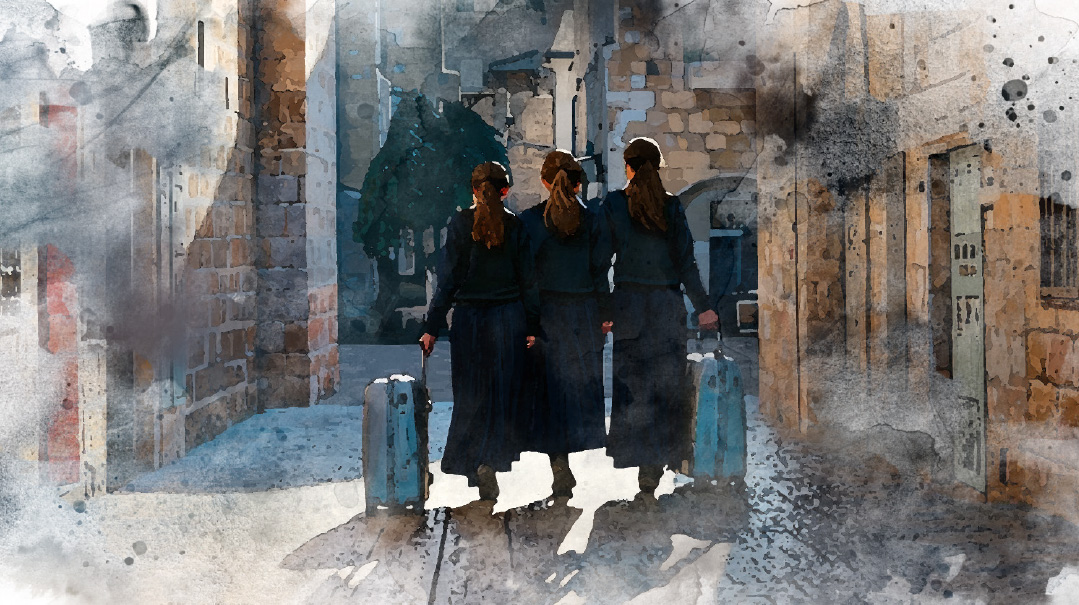On the Same Page


Most weeks our main magazine goes to print Monday night and hits stores on Tuesday night or Wednesday morning, depending on location. So the e-mail I received last Wednesday, from a staff member who deals with logistics in the US, seemed eminently reasonable. “How many pages will you be having in the upcoming magazine?” she asked, and explained why she needed the information.
My answer: “I don’t know.”
This may seem strange, but no one on staff ever knows how many pages our magazine will include until the day we go to print. In fact, that’s the first question I ask our production team when I come in to work on a closing day: How many pages did we get?
Their answer is based on several considerations; a major one is the number of ads reserved by Monday morning. We do have a base number of content pages that is inviolable, and even the sparest edition of Mishpacha magazine will always have a rich representation of opinion pieces, news, full-length features, and the lighter offerings of The Mix. But beyond that base, the exact number of pages varies, and can go way up depending how many ads are sold.
When our advertising reps sell more ads, it’s good news for us and for our readers, because the extra pages allow us to jump up to the next increment of eight and provide more content along with those extra ads. The way we see it, when there’s a bigger magazine it shouldn’t only mean more ads, it should also mean more to read.
Most magazines are calculated in increments of eight (often but not always including the cover, back page, and inside covers). That’s because industrial printers print four print-size pages on one large sheet of paper — plus the back of that large sheet, totaling eight — and then slice and collate them.
Working with those increments of eight, along with three extra ads, you might get five more pages of content. On the other hand, one extra ad will probably mean that we trim a page of content rather than add seven pages. Come Monday morning, we utilize a set of ad-content ratios to work out the final figure, but it’s not straight math. A busy news week, an important community event, a special story — all these are reasons to bypass the usual calculations and “go up” to the next increment, even if the numbers don’t always justify it.
In order to pull off this last-minute calculus, we need to have different types and lengths of material and contingency plans. We need to have longer pieces and shorter pieces, options to “go up” and options to “go down.” Pieces that are very visual can sometime be adjusted — remove two photos and lose a page, include a collage of historical photos and add interest and context with the extra page. Pieces that are mostly text aren’t as flexible (like a magnificent 14-page piece that’s been waiting for publication since Yom Kippur).
To make this work, we also need to have pieces with different expiration dates. There are seasonal Yom-Tov-themed pieces that must run at a specific time of year. There are news pieces that absolutely must run this week. There are also pieces that can run anytime (we call those “evergreens”).
But it’s not just a numbers or calendar game. Take one piece out and you affect the mix. Go too heavy on news and you might be missing the human-interest spice that keeps certain readers satiated. Give two extra pages to showcase those magnificent photographs and you might be forced to hold the opinion piece that continues last week’s conversation. So that final lineup can require an agonizing process of thinking and rethinking, coulds and shoulds and musts and what-ifs.
A major element of the Mishpacha formula is the “something for everyone” factor. As we plan our long-term grids, adjust them closer to deadline, and then — on closing days — scramble them again once we have that final page count, we aim most of all for balance: something heavier along with something lighter, a profile balanced by a trend story, human interest countered by expert opinion, carefully articulated arguments offset by dramatic personal accounts, and long reads versus short, chunk-style pieces.
So Monday mornings call for a unique blend of accounting and artistic skills, and elicit spirited (and sometimes combative) dialogue between the logistics and creative teams. One of the nicest things about the process, though, is the shared understanding by everyone — even the bookkeeping department — that the bottom line depends more than anything on a product that serves our readers. As we play with pages and ratios, uppermost in our minds is that perfect balance: the mix of different formats, tones, voices, and styles that create a satisfying package.
No matter how many pages it is.
Oops! We could not locate your form.






